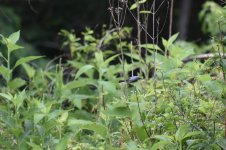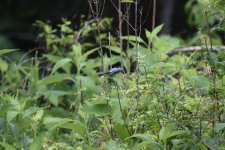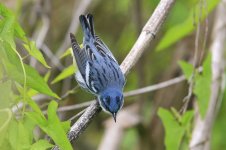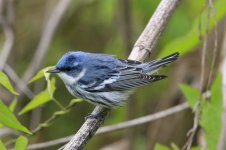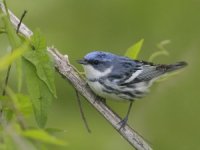hamlinjk15u
Well-known member

I was hiking around Radnor Lake State Park yesterday and caught this little guy. Indigo Buntings are very common, and thats what I thought it was initially (never heard a song or call) however now looking at my photos again closer, the markings don't seem to match an Indigo Bunting.
Doing some research, I am leaning most towards a Cerulean Warbler, which based on its migration pattern, would seem to make sense (end of migration season, beginning breeding season) although maybe a little behind the power curve moving more north?
I also used Picture Bird and it gave me a few different outcomes, but some weren't even from near here.
Hoping for some help IDing this bird. thank you!!
Doing some research, I am leaning most towards a Cerulean Warbler, which based on its migration pattern, would seem to make sense (end of migration season, beginning breeding season) although maybe a little behind the power curve moving more north?
I also used Picture Bird and it gave me a few different outcomes, but some weren't even from near here.
Hoping for some help IDing this bird. thank you!!




